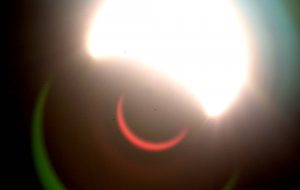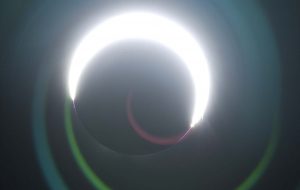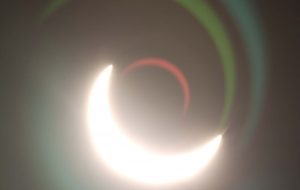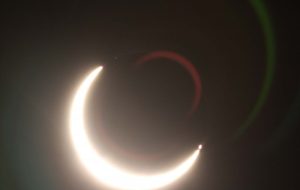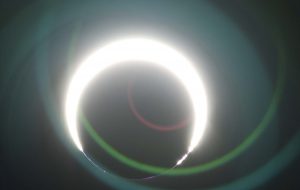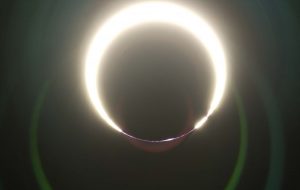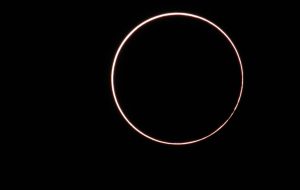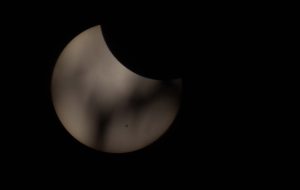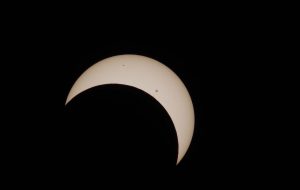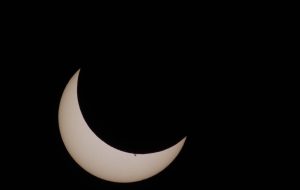Report and Photos from Friedhelm Dorst
Here are pictures from Tinian Island during the annular eclipse of June 11 together with the Maleys (Paul & Lynn), the Nyes (Derald & Denise) as well as Paul Stewart and Ann Bullen from Melbourne, Australia. See the attachment!
My eclipse adventure was not as thrilling as yours which you happened to experience together with Daniel Fischer when facing the menace of “Boris,” but a big and long cloud at my hotel roof location did not disappear before 5 minutes from annularity, 10 minutes earlier I would definitely have been clouded out. The general weather on that day had been very promising during all the other partial phases on eclipse day, much better than on the previous days, but this very long cloud 25 minutes before central eclipse threatened to ruin precisely the ring. People situated more to the south did not need to care, so the tension was paralyzing one’s mind. The relief came just in time though I could have needed it 5 minutes earlier. Nevertheless: what a present from heaven that no more clouds appeared in front of the sun for a long time, be it small whisps of cumuli or the slightest cirrus ribbons: it was so wonderfully clear as You could not have wished for any more!
I used two camcorders with ND4 and an even stronger ND filter respectively. But the most important instrument was a Nikon 400mm-telephoto ED lens with two tele-converters yielding a f.l. of 1120 mm. The camera body was a Nikon D1H digital camera which I ran in uncompressed RAW mode. I used the lowest speed of 200 ASA at an effective f/32 with an ND3 filter (which proved to be ND 2.7 instead). These parameters allowed me to capture “normal” pictures displaying the limb darkening effect on the sun’s surface just at the shortest exposure time of 1/16 000 second as well as 1/8 second (just avoiding image smear, since my lens was leaning against brick stones) for prominence and coronal picturing. I also did the latter with removed filter at a range of 1/16 000 second to 1/250 second, but the use of a filter is safer for the light meter and the longer exposure times with filter helped to prevent the blooming effect. When scrutinizing some of the pictures with the lunar outline being silhouetted against the inner corona I could trace this feature even more than 7 minutes after maximum eclipse. In order to go sure I decided to make such photos until 10 minutes past maximum stage, which was only possible after the maximum because of clouds until some 5 minutes before maximum. Maybe that some intelligent removal of the internal reflections can reveal the presence of coronal background even farther from maximum phase than obvious on the unprocessed images. The general result is at least a confirmation of those obtained near Hampton’s Inn in Australia in 1999 with only 800 mm f.l. ! The coronal features of the present eclipse are well matching SOHO pictures of precisely the maximum minute at Lori Lynn’s Motel on Tinian.
It surely was no matter of exquisite equipment. Maybe I should have preferred my 2″ achromatic refractor that I used at the Australian eclipse because of possibly less serious internal reflections. This will become a matter of concern at future solar rings.
Friedhelm “Freddy” Dorst
